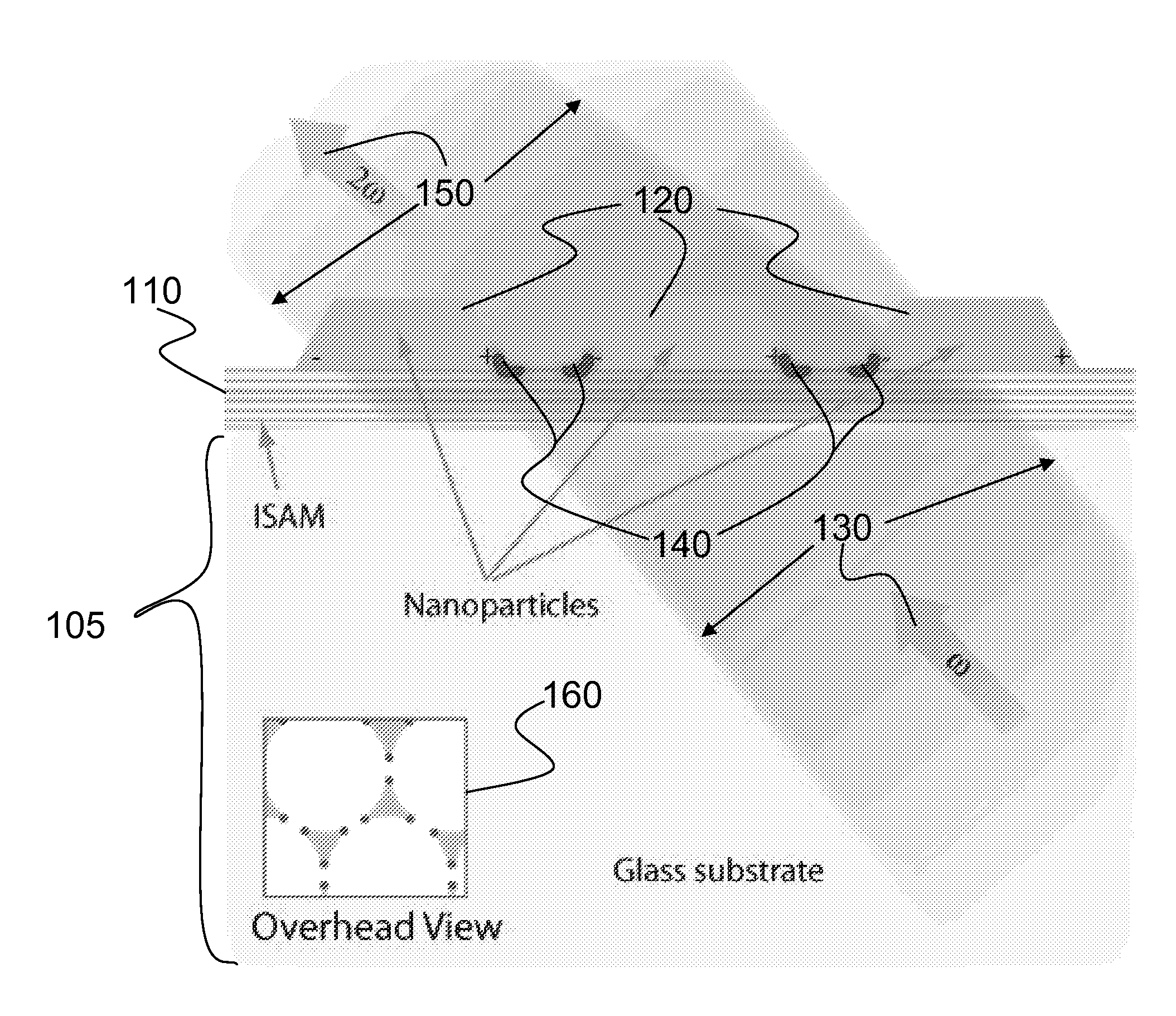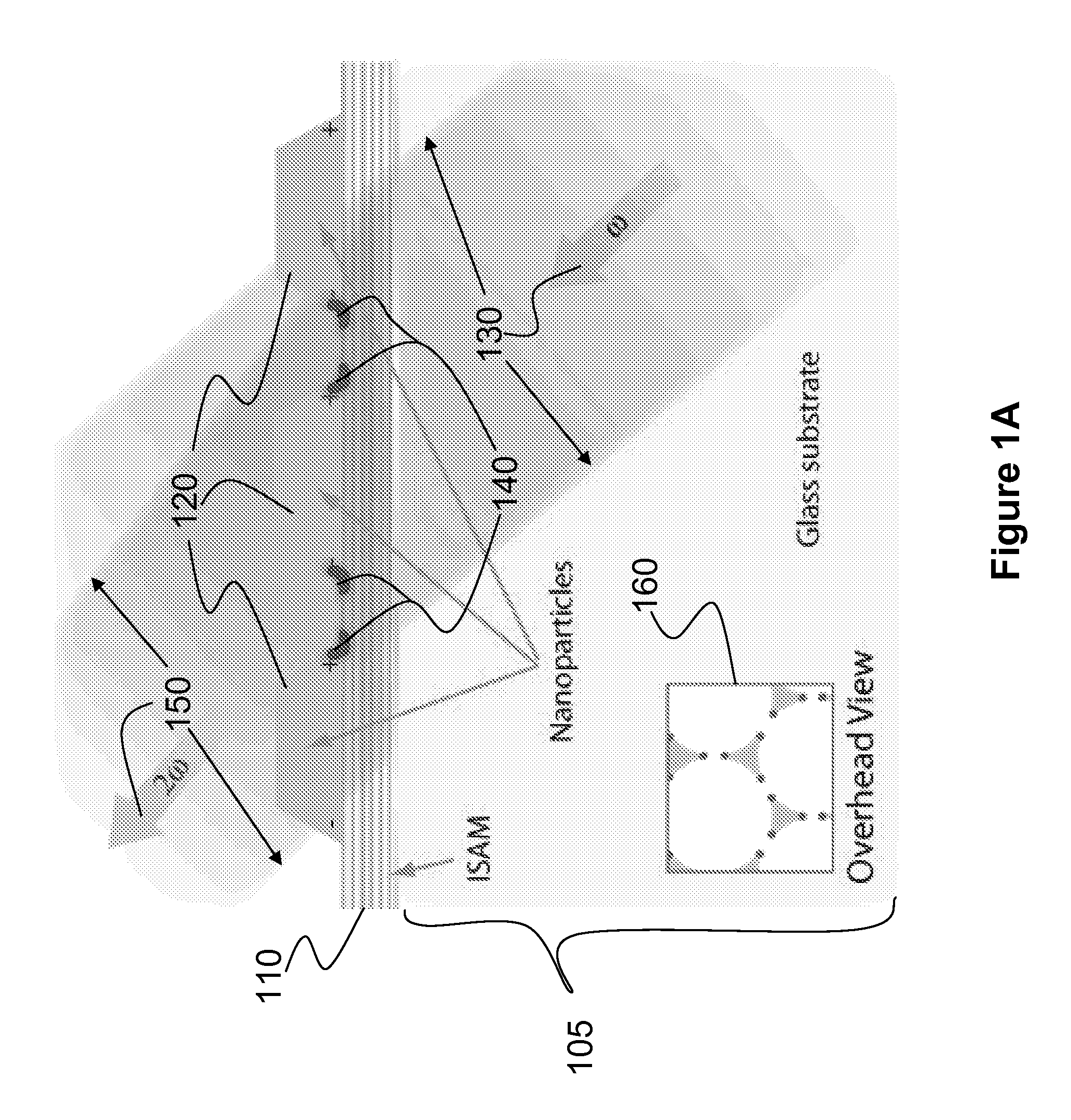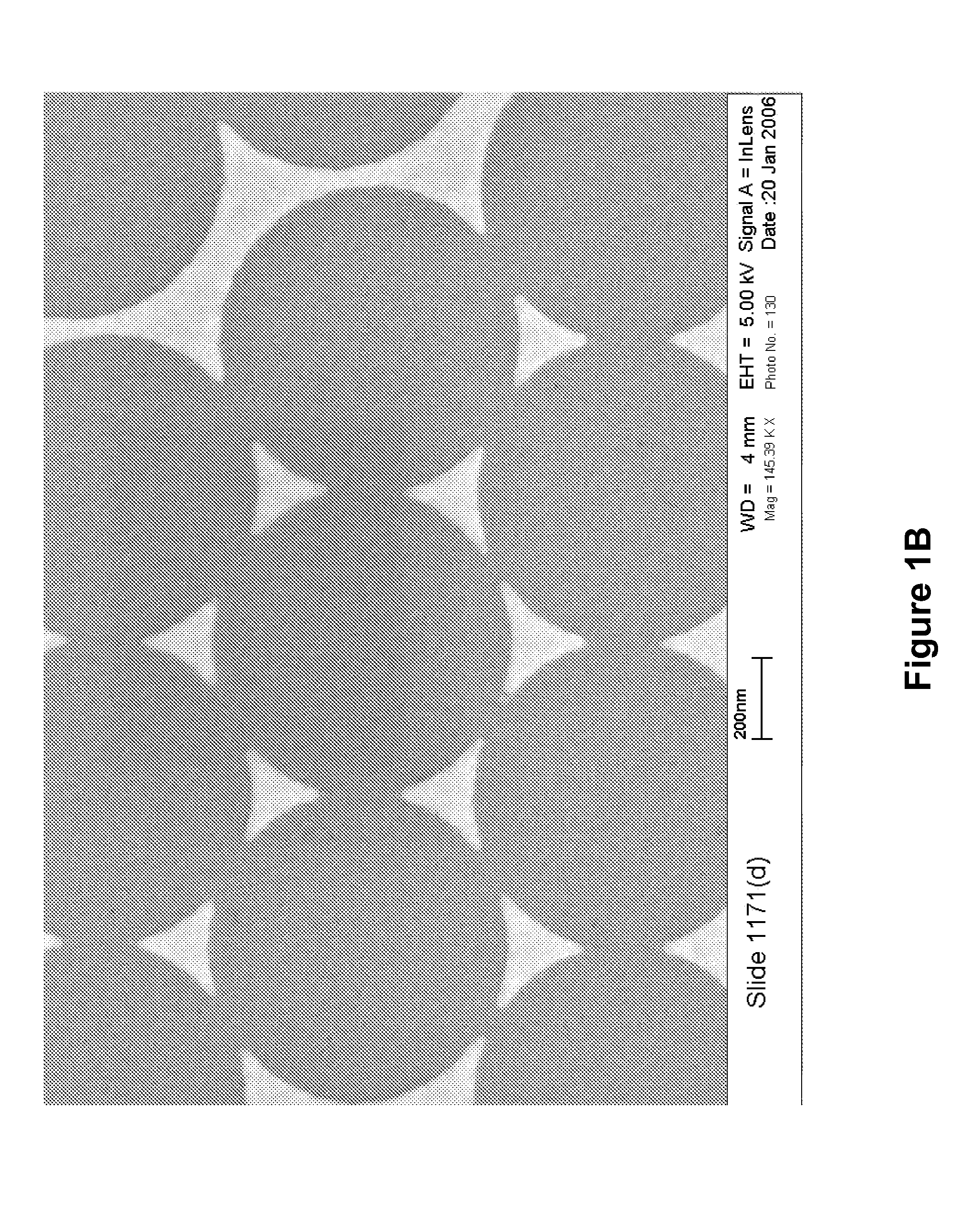Enhancement of second-order non-linear optical susceptibilities in organic film materials using non-centrosymmetric nanoparticles
- Summary
- Abstract
- Description
- Claims
- Application Information
AI Technical Summary
Benefits of technology
Problems solved by technology
Method used
Image
Examples
embodiment 1
Nanoparticles Deposited on a Thin ISAM Film
[0053] The invention may be understood by considering several examples. One example is application of the invention to ISAM films. While ISAM films are remarkably stable, their NLO performance is too low for practical devices. The degree of net polar ordering that can be achieved with a polymeric dye ISAM film is limited by: 1) orientation of dipoles in opposite directions above and below the polymeric dye layer, resulting in partial cancellation; 2) random orientation of dipoles within thicker monolayers due to polymer loops; and 3) steric constraints on orientation since the relatively bulky chromophores are separated along the polymer backbone by only two carbon-carbon bonds. A preliminary step toward the invention is a new methodology for achieving a high degree of polar ordering of organic chromophores in thin films—a hybrid covalent-electrostatic self-assembled multilayer process. Our first examples used the dyes Procion Red MX-5B an...
embodiments 2 , 3 and 4
Embodiments 2, 3 and 4
[0067] 2: nanoprismatic dimers deposited on an ISAM film. Add filler layer and repeat.
[0068] 3: The nanoparticles are nanoaggregates that may be fabricated using one of the methods (1, 2 or 3) specified below, deposited on a surface. Add an inert filler and repeat.
[0069] 4: The nanoparticles are nanoaggregates that may be fabricated using one of the methods (1, 2 or 3) specified below. The nanoaggregates are dispersed into a crosslinkable polymer matrix and are oriented into a polar configuration by an external electric field. The polymer is then cross linked, and the configuration is thus fixed even after the electric field is turned off.
[0070] Examples of chemical synthesis routes to metallic nanoparticles, that may be used to as a starting point for the nanoaggregate fabrication techniques described below.
[0071] We have employed two methods to date to synthesize silver and gold nanoparticles: (1) reducing chloroauric acid with salicylic acid process to m...
embodiment 2
Film / Filler Superlattice
[0090] In this method, an MOH-ISAM film is deposited on a substrate as just described in FIG. 1A (an NLO ISAM film is deposited first, followed by a layer of nanoparticles). After this step, an inert filler material such as PMMA, Cyclotene, or spin-on glass is spin cast on top of the film to encapsulate it. If necessary, the surface is then planarized, and another MOH-ISAM film is deposited. The process is repeated until a film of desired thickness is created. FIG. 9 displays a schematic view of the resulting material. The thickness of the filler should be the same in each cycle, and be small compared to the operating wavelength, so that scattering is minimized, but large compared to the plasmon decay length, so that the modes in different films do not interact. A thickness of 100-200 nm is an appropriate starting point.
PUM
 Login to View More
Login to View More Abstract
Description
Claims
Application Information
 Login to View More
Login to View More - R&D
- Intellectual Property
- Life Sciences
- Materials
- Tech Scout
- Unparalleled Data Quality
- Higher Quality Content
- 60% Fewer Hallucinations
Browse by: Latest US Patents, China's latest patents, Technical Efficacy Thesaurus, Application Domain, Technology Topic, Popular Technical Reports.
© 2025 PatSnap. All rights reserved.Legal|Privacy policy|Modern Slavery Act Transparency Statement|Sitemap|About US| Contact US: help@patsnap.com



